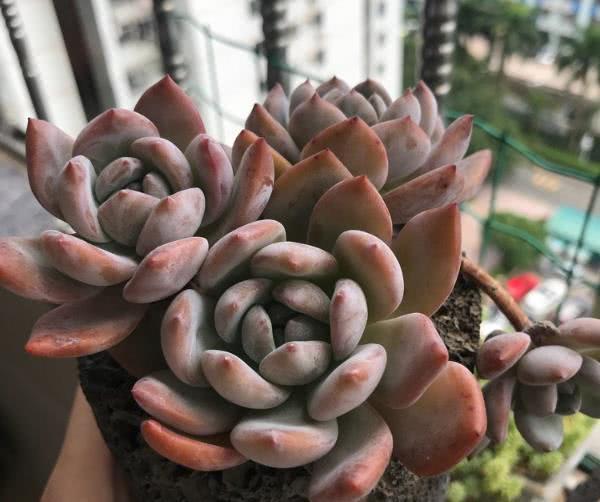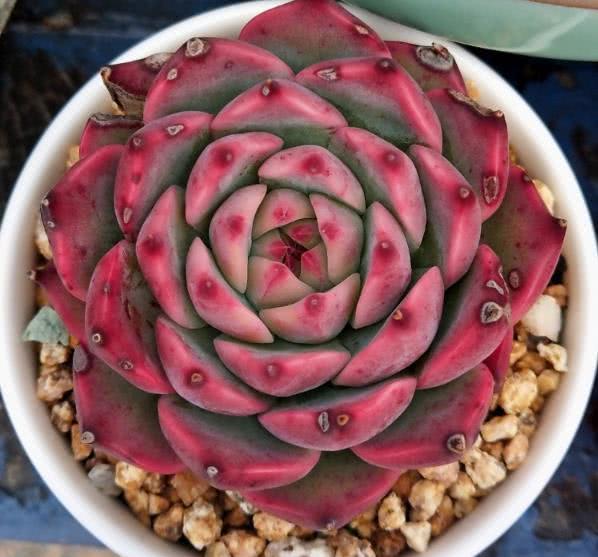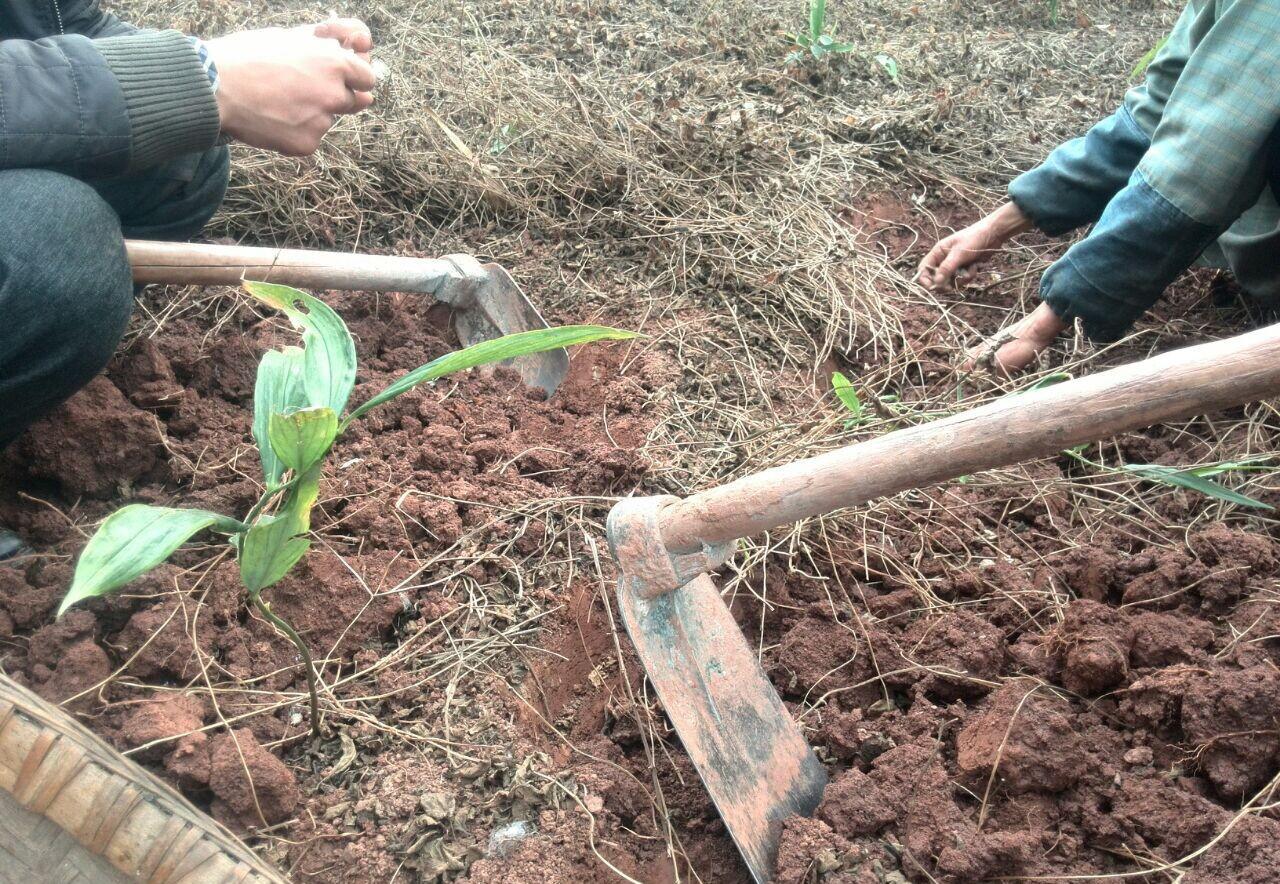Spreading sand on the flowerpots of succulent plants can prevent mosquitoes from rotting roots.

Everyone knows that sand can be used for cutting, mixing soil and cushioning the bottom of the basin, but do you know that it can also lay basin noodles? Paving with sand is not only permeable and breathable without rotting roots, but also can prevent mosquitoes, the most important thing is to raise succulent plants super beautiful! For the sand on the shop floor, don't use that kind of very fine sand, but choose the coarse sand the size of soybean grains. Pick out the coarse sand of the right size and rinse it with clean water 2-3 times until the water is not muddy. Wash the coarse sand, dry it in the sun, and then spread it on the basin, permeable and breathable. Attention, not too thick, 0.5-0.3 cm on the line, too thick water penetration is not good.
Laying a layer of coarse sand on the surface of the basin soil can block the moist soil, prevent mosquitoes from laying eggs in the soil, and completely avoid the nuisance of mosquitoes to succulent plants. Can also use small ceramsite pavement, advantages: because it is fired at high temperature, light weight, large particles, cracks. The drainage is good and the air permeability is excellent. Prevent excessive watering of succulent orchid roots and effectively increase the cracks in the soil. Use: it can be used as the bottom, pavement and even mixed soil of succulent plants. Ceramsite is already very famous for growing flowers, and many people know that using it to prevent rotting roots at the bottom of the basin, but they do not know that it is also good for laying potted noodles, which can not only prevent rotting roots and insects, but also increase humidity and air permeability, making the roots of flowers sturdy and white! Especially suitable for large potted plants and succulent plants.
How does ceramsite cover succulent plants? Wash the bought ceramsite several times and dry it. Buy the one with large particles and light texture. Spread ceramsite on the surface of the basin soil, basically a thin layer on it. Not too thick, too much. Ceramsite has a loose texture and many voids, which can absorb excess stagnant water in the basin, avoid rotting roots and increase humidity. In addition, ceramsite covers the surface soil, isolating mosquitoes, so that they can not lay eggs in the soil, so they can achieve the role of insect prevention.
Flower friends experience sharing: at the beginning, I did not like to shop for succulent plants. Slowly, I found that perlite and peat particles often appeared on the floor without succulent plants, so it was very difficult to clean. I have used volcanic rock, deer marsh, red jade, Maifan stone, and roadside construction site large gravel. The conclusion is that deer marsh is best to use volcanic rock color too dark, when the sun is strong. Will absorb heat and scald the leaves and if they are not well polished, the edges will also hurt the leaves at the bottom. Although the color of red jade is not as dark as the volcanic rock, it is close to the color of peat, and it is easy to get dirty. Deer marsh is a light color.
The second flower friend shared: I have used many kinds of paving stones, most like Maifan stone and red jade soil. The red jade soil is relatively clean, and it is obvious that it is dry and wet. Maifan stone is also good, but I can't see whether the soil is dry or wet. Deer marsh soil powder is too much, the color is very clean. Volcanic rocks feel so rough that they are easy to cut like succulent plants. And volcanic rocks are dark in color and are too endothermic in summer. From a nutritional point of view, Maifan stone, like other granular soils (such as red jade soil, deer marsh soil, gold plant), are rich in trace elements, which are suitable for growing succulent plants, but if they are rich in certain elements, they are especially suitable for growing succulent plants.
For the maintenance skills of general flowers, here to share one, that is, the long-term watering method of plastic bags, you may think that this name is very strange, yes, not only the name of this method is strange, but even the method is incredible. It is suitable to be used when no one is at home for a long time, such as going on a business trip or visiting relatives for ten and a half days. In order not to let the flowers die, I give you this flower-growing technique here. Find a plastic bag, fill it with water, tie the mouth of the bag tightly to prevent it from overflowing, then use a fine needle to pierce a small hole in the plastic bag, and lower the position of the hole into the flowerpot, and let the water slowly soak into the soil through the hole to maintain the moisture of the soil. Do not open the hole wide, or the consequences will be self-evident.
Here is a gathering place for succulent plant lovers, sharing succulent maintenance skills, welcome to follow and exchange.
- Prev

Do you want to raise succulent plants in summer? Don't take risks. Just shade properly.
There are only two reasons why you want to raise succulent plants in summer. One is that more light can make succulent plants look better, which is relatively speaking. More light will look better than less light, but no matter how good-looking succulent plants are in summer, they can't beat the other three seasons.
- Next

This wild vegetable looks like a bug. It is called Cordyceps sinensis with high medicinal value. Kimchi can be called unique.
In the early years, due to the lack of refrigeration technology, the shelf life of many vegetables was very short. From the moment they were pulled out of the ground in summer to the moment of corruption, they became a mess in no more than a week. At that time, there was no refrigeration technology. Smart.
Related
- Wuhan Hospital Iron Tree Blooming Result Was Instantly Frightened by the Gardener Master
- Which variety of camellia is the most fragrant and best? Which one do you like best?
- What is the small blue coat, the breeding methods and matters needing attention of the succulent plant
- Dormancy time and maintenance management of succulent plants during dormancy
- Minas succulent how to raise, Minas succulent plant pictures
- What are the varieties of winter succulent plants
- How to raise succulent plants in twelve rolls? let's take a look at some experience of breeding twelve rolls.
- Attention should be paid to water control for succulent plants during dormant period (winter and summer)
- Watering experience of twelve rolls of succulent plants
- Techniques for fertilizing succulent plants. An article will let you know how to fertilize succulent plants.

